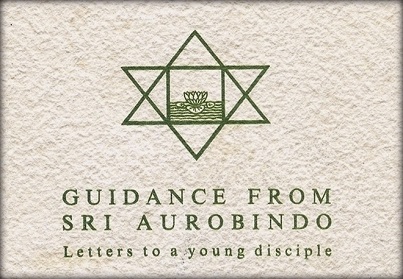
(This is a preface, written by Nagin Doshi)
In this second volume of letters, there is frequent reference to words such as inertia and tamas. Here these words are not intended to mean ‘fatigue’, ‘lethargy’ or ‘unwillingness to act ‘physically or mentally’. To understand properly the exact nature or character of tamas it would be good to know a little of the sadhana that was going on during that period.
In the year 1935 the general sadhana of Sri Aurobindo’s Yoga had descended into the physical. So we all had to come down from the mental and vital into this darker field. To many sadhaks it was rather a premature descent as their mental and vital were not sufficiently prepared for this entry into an obscure plane. So the physical used to send up wave after wave of its inertia to cover up any higher or deeper activity of the sadhana. As Sri Aurobindo pointed out to me, “The principle of tamas is inertia, aprakāśa (obscurity) and apravṛti (non-activity) shown here by being unable to keep the prakāśa (light) or the higher consciousness or answer continuously to the activity of sadhana.” In another letter he explained the fundamental cause of the rise of inertia: “This negation is the very nature of the physical resistance and the physical resistance is the whole base of the denial of the Divine in the world. All in the physical is persistent, obstinate, with a massive force of negation and inertia.”
Later on, the sadhana descended still lower: “The most material has come up or you have gone into it.” And as if this was not quite enough the subconscient too did not stay out of the battle. As Sri Aurobindo pointed out, “The subconscient difficulty is the difficulty now — because the whole struggle in the general sadhana is now there. It is in the subconscient, no longer in the vital or conscious physical that the resistance is massed together.”
This triple resistance brought into full play the three most obstinate and insistent minds at work in human nature: the physical mind, the mechanical mind and the subconscient mind. They often worked in conjunction, sometimes in two’s and sometimes singly, but in such a powerful and complicated way that it was a problem to find out which one or two, of the three were in prominence. They always tried to cover, or at least colour, any good movement of the mind or the vital being or of the enlightened physical.
The tamas or inertia did not actually tire me physically or mentally. All along I was carrying on about eight hours of physical work and two to four hours of mental work. But psychologically it influenced me heavily in any spiritual pursuits.
This difficulty becomes more complicated when one is made to deal with the second aspect of physical Nature, namely the universal. For this recurring movement, once more let me quote a letter of Sri Aurobindo’s, written to another disciple. However, it should be noted that here he speaks only of one mind, the physical mind, and not of the mechanical and subconscient minds which are much more difficult to manage and master:
“It is the nature of the physical mind to be obstinate. Physical nature exists by constant repetition of the same thing — only a constant presentation of different forms of itself. This obstinate recurrence is therefore part of its nature when it is in activity; otherwise it remains in a dull inertia. When therefore we want to get rid of the old movements of physical nature, they resist by this kind of obstinate recurrence. One has to be very persistent in rejection to get rid of it.
“There are two aspects of physical Nature as of all Nature — the individual and the universal. All things come into one from the universal nature — but the individual physical keeps some of them and rejects others, and to those it keeps it gives a personal form. So these things can be said to be both inside it and coming outside from within or created by it because it gives a special form and also outside and coming in from outside. But when one wants to get rid of them, one first throws out all that is within into the surrounding nature — from there the universal Nature tries to bring them back or bring in new and similar things of its own to replace them. One has then constantly to reject this invasion. By constant rejection, the force of recurrence finally dwindles and the individual becomes free and able to bring the higher consciousness and its movements into the physical being.”[1]
22-1-1937
[1] Mother India, July 1952, pp. 2-3.



About Savitri | B1C2-02 The Usefulness of Crisis and Tragedy (pp.12-13)